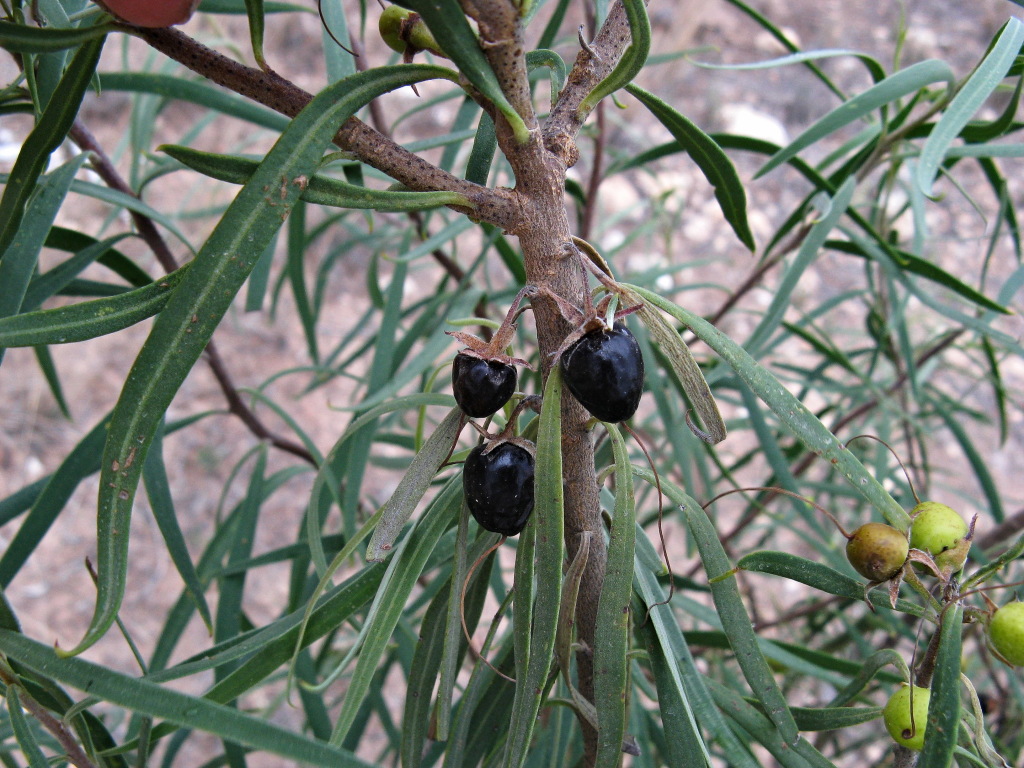Eremophila longifolia
(R.Br.) F.Muell.Shrub or small tree to c. 8 m high, often root-suckering, pubescent with appressed or spreading simple hairs or a mixture of simple and glandular hairs; branches sparsely to densely tuberculate. Leaves alternate, linear-lanceolate, mostly 3–20 cm long and 3–14 mm wide, pubescent to tomentose, acuminate, often uncinate, margins entire. Inflorescences 1–5-flowered; pedicels 4–10.5 mm long. Flowers zygomorphic; sepals more or less lanceolate, 2–6.5 mm long, acute to acuminate, valvate or imbricate, pubescent, green; corolla 20–30 mm long, pubescent outside and inside, dull reddish, spotted or unspotted, upper lip 2-lobed; stamens 4, exserted, anthers reniform; ovary glabrous, style glabrous. Fruit ovoid-obloid to subglobose, 5–12 mm long, 5–12 mm diam., fleshy, glabrous or rarely with scattered hairs, purplish when ripe. Flowers most of year.
LoM, MuM, Wim, VVP, VRiv, MSB, RobP, MuF, Gold, GGr, NIS. All mainland states. Scattered across north and north-west Victoria in a variety of habitats, but usually on heavier loamy soils.
Jeanes, J.A. (1999). Myoporaceae. In: Walsh, N.G.; Entwisle, T.J., Flora of Victoria Vol. 4, Cornaceae to Asteraceae, pp. 528–539. Inkata Press, Melbourne.
 Spinning
Spinning


